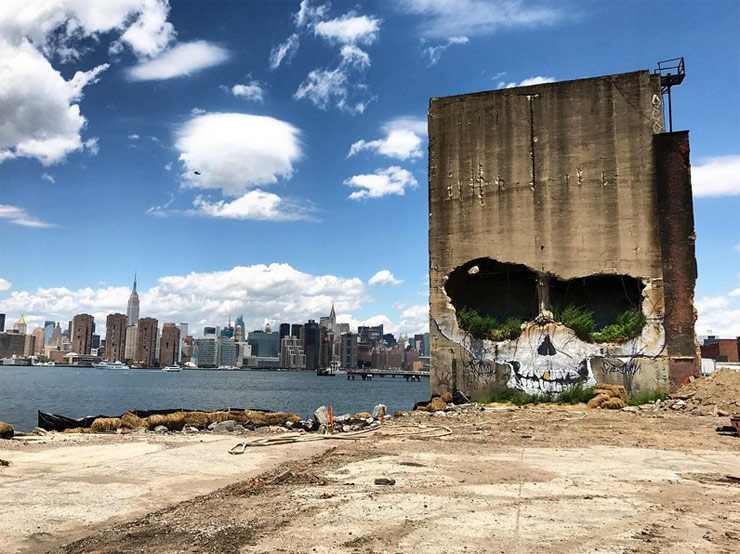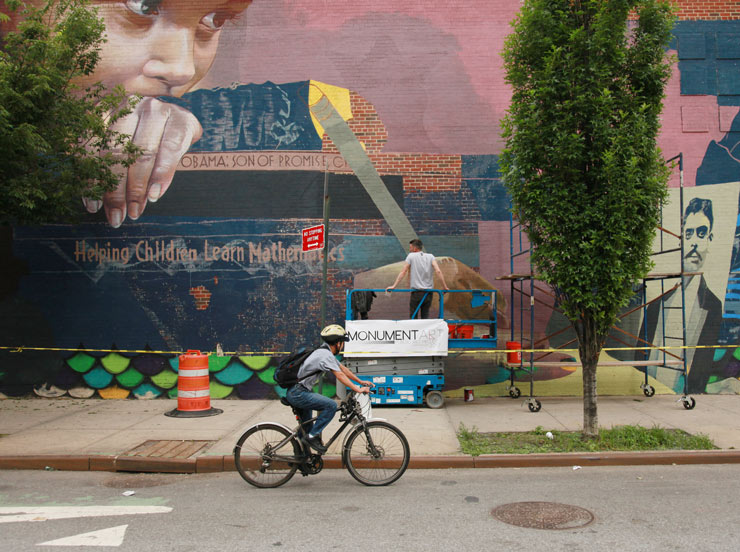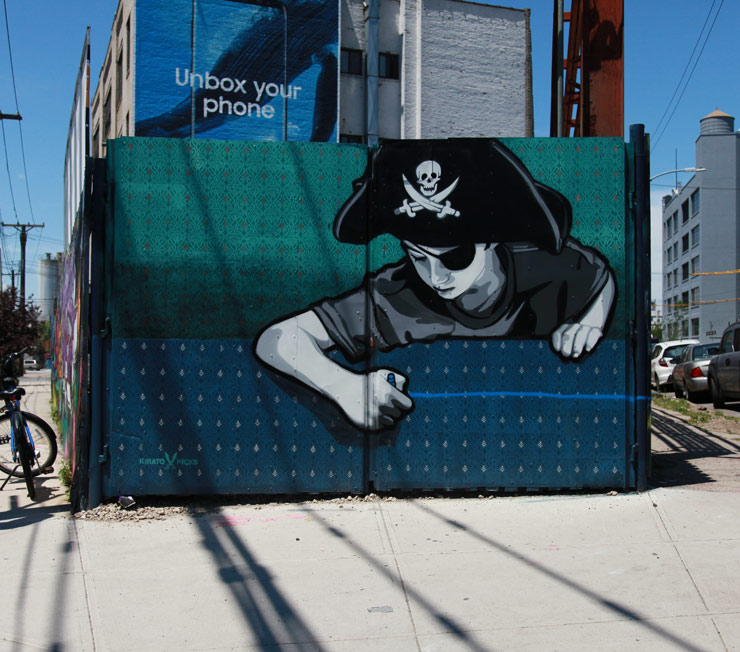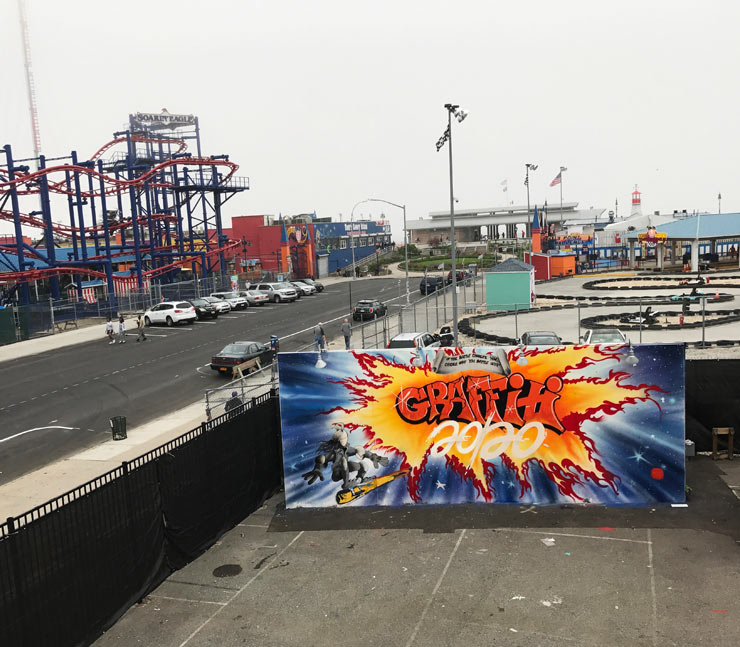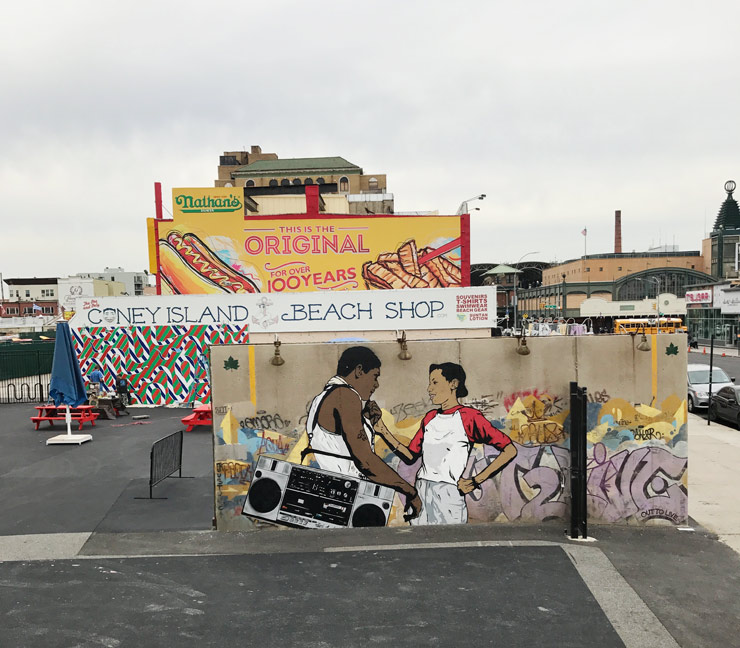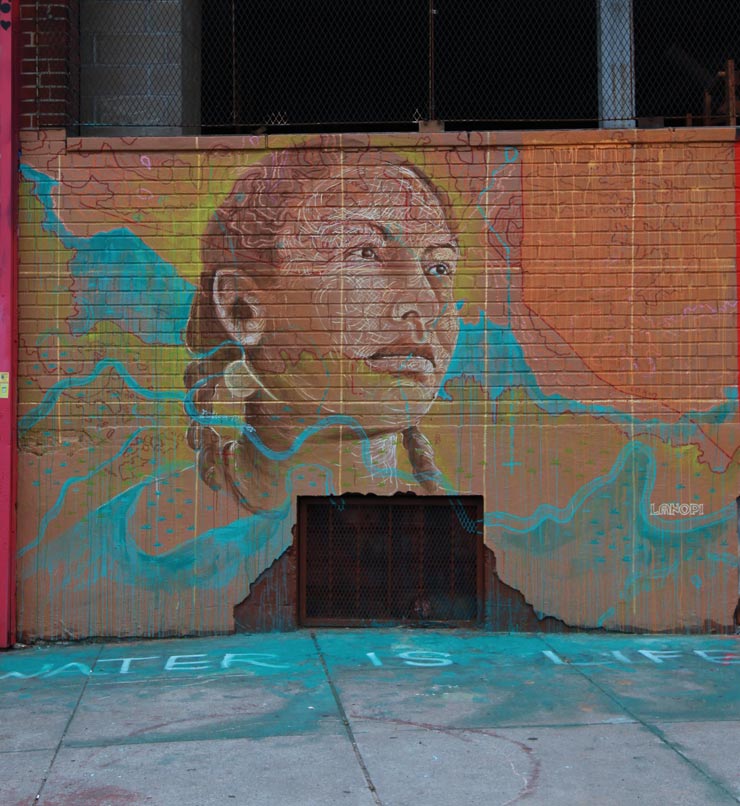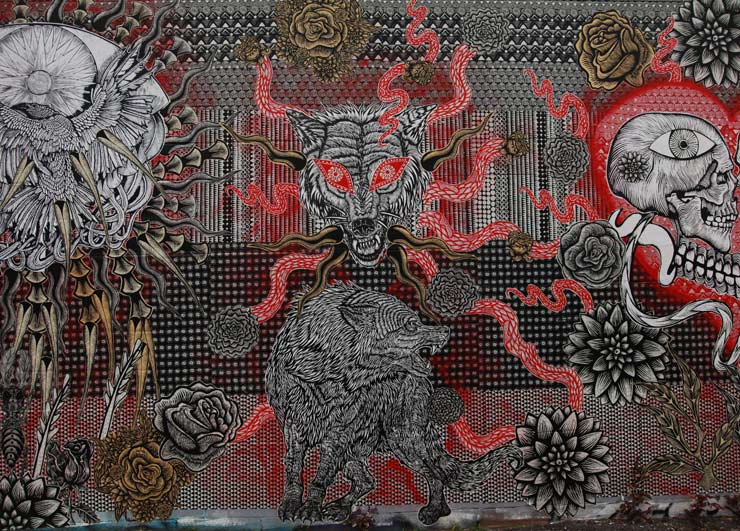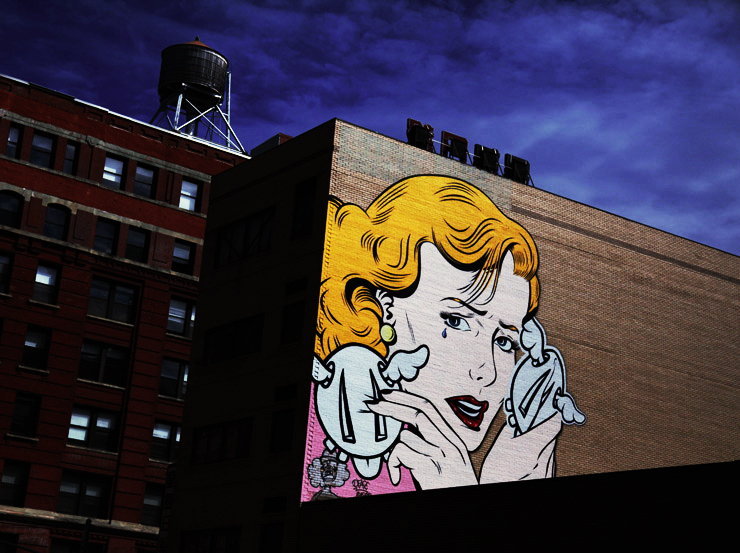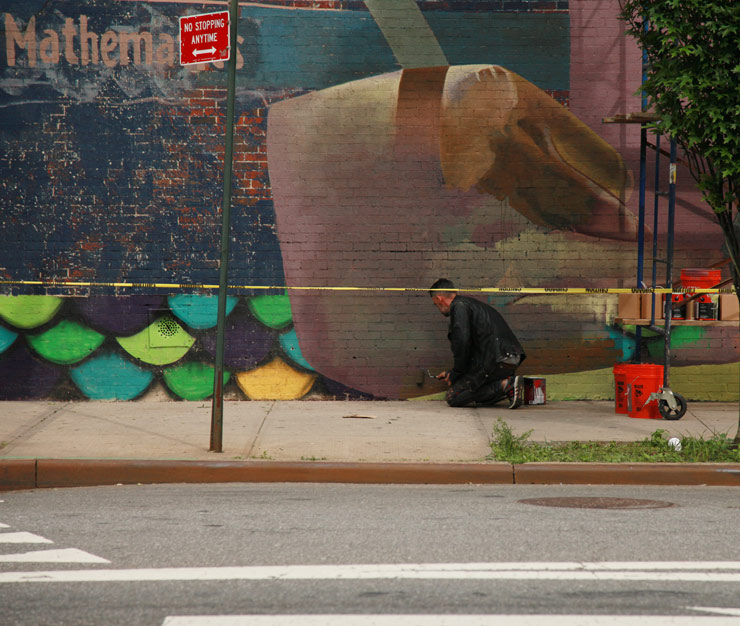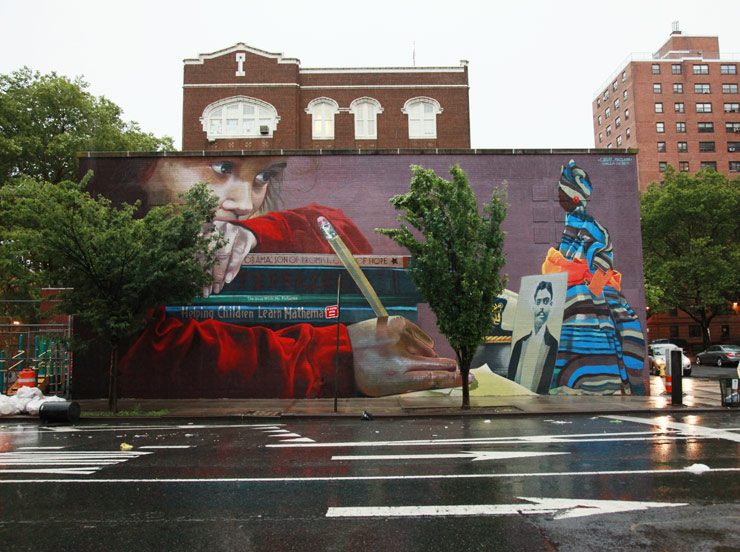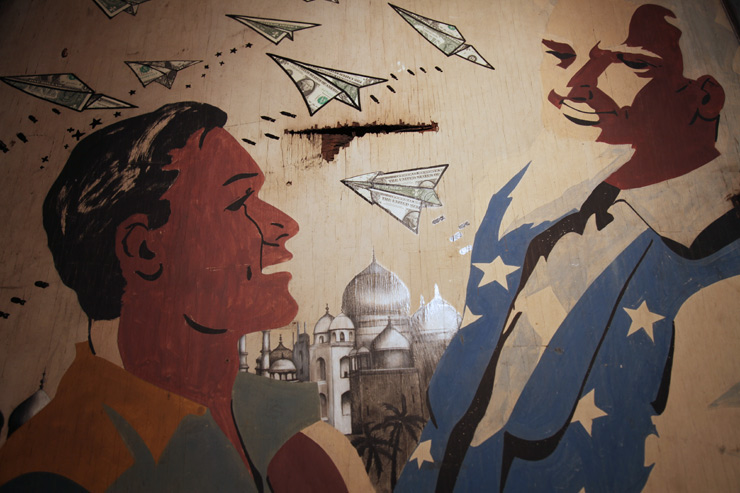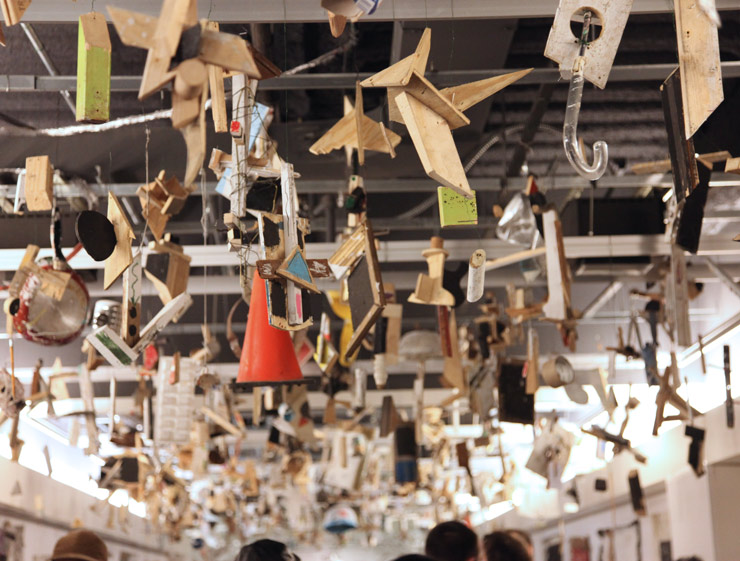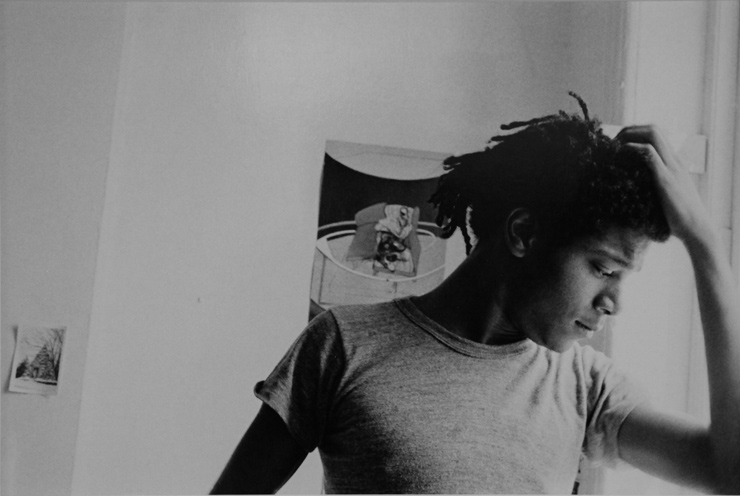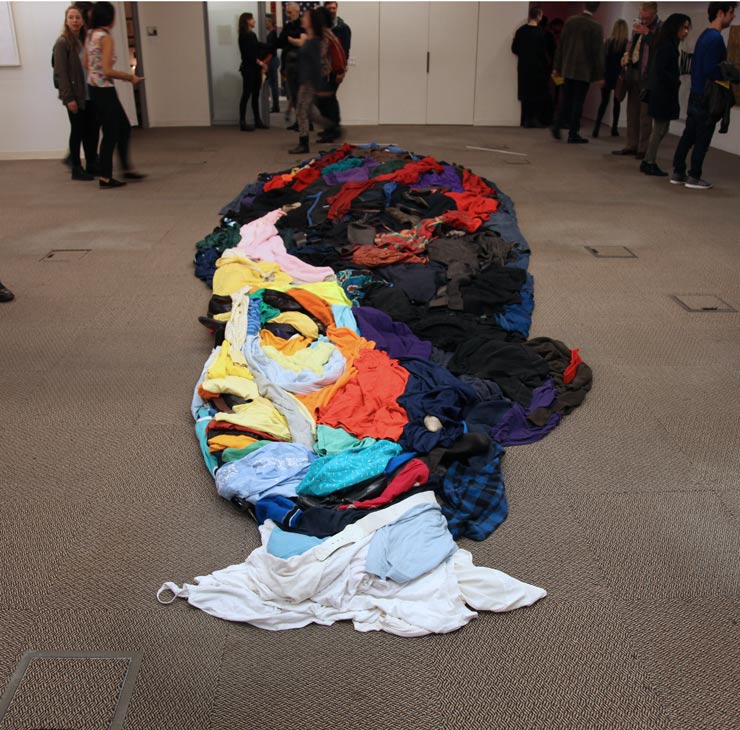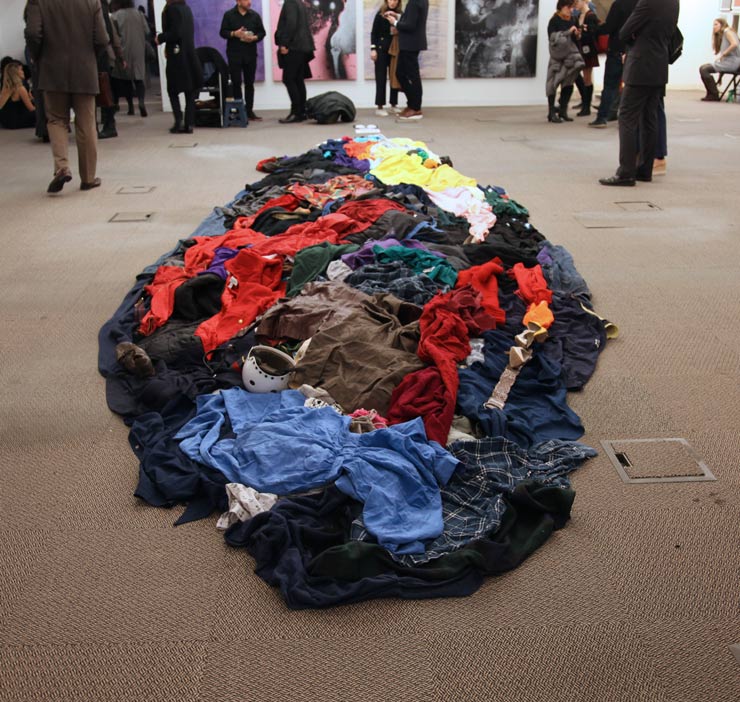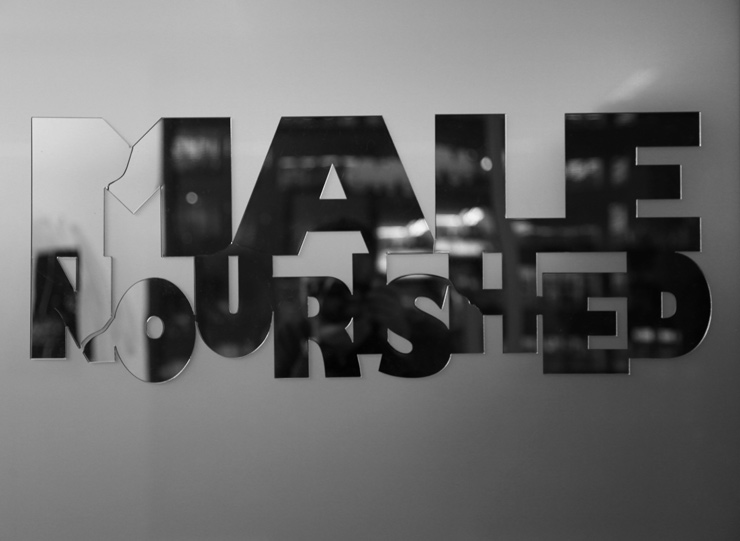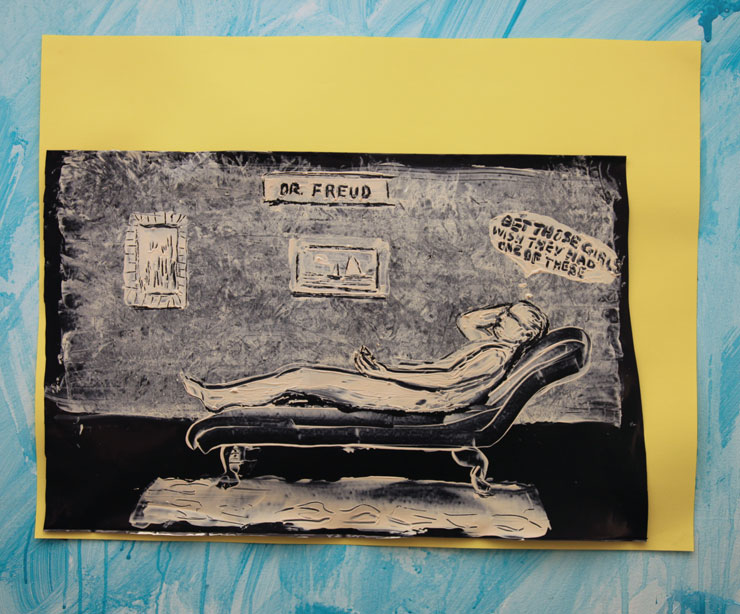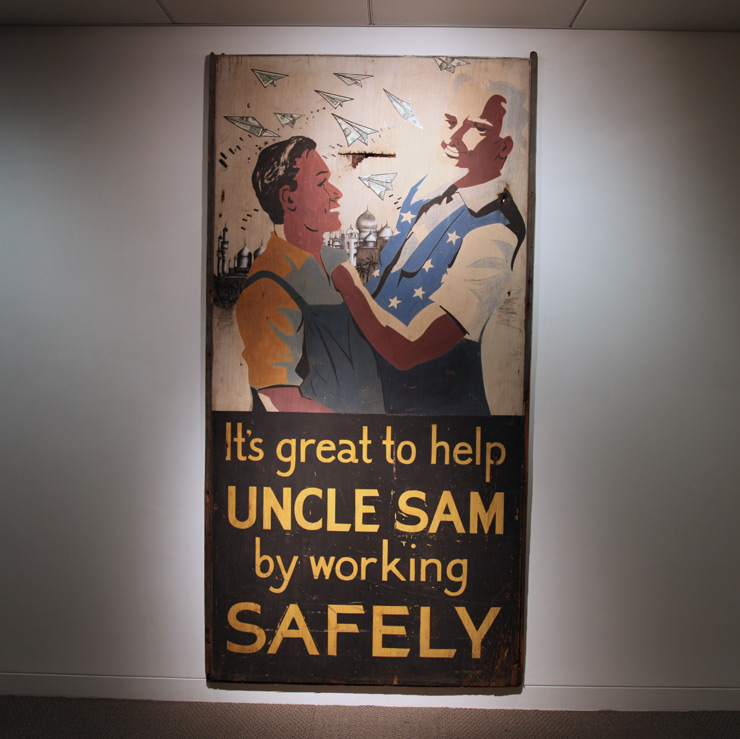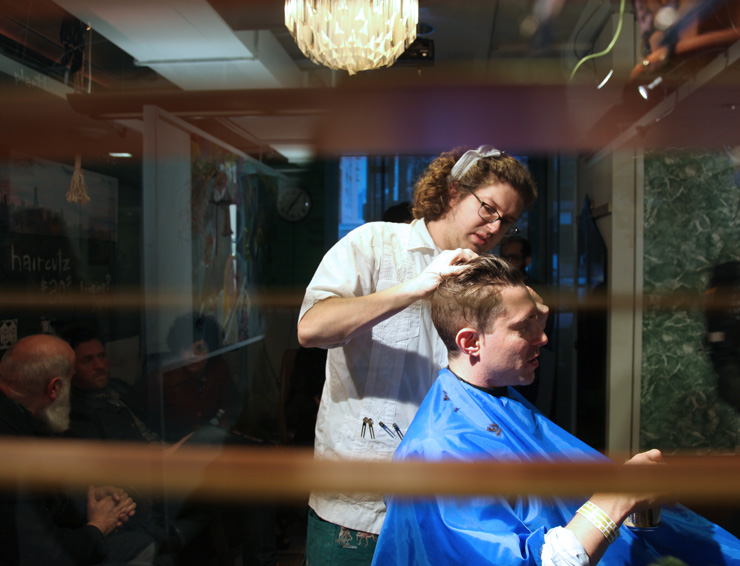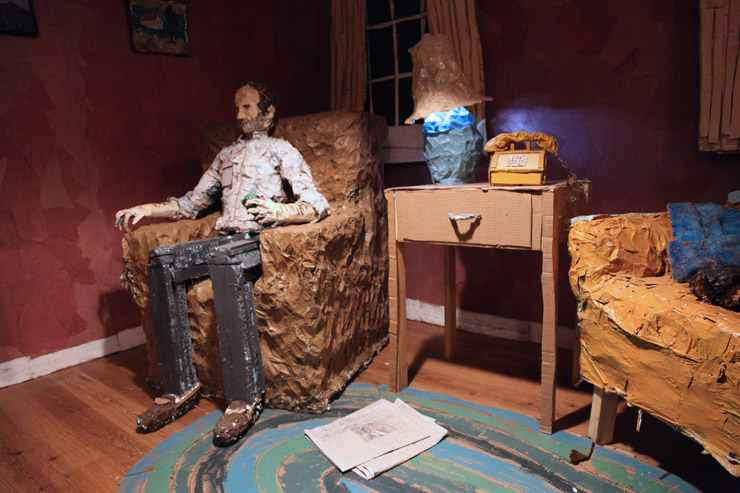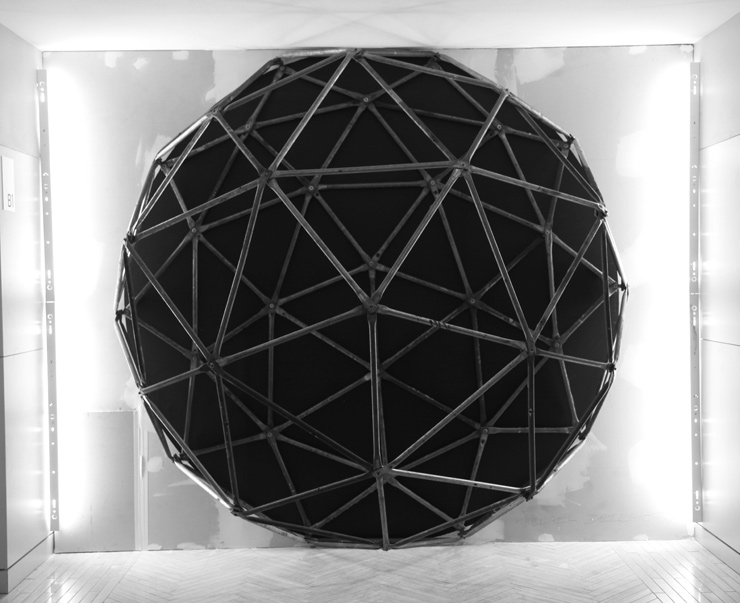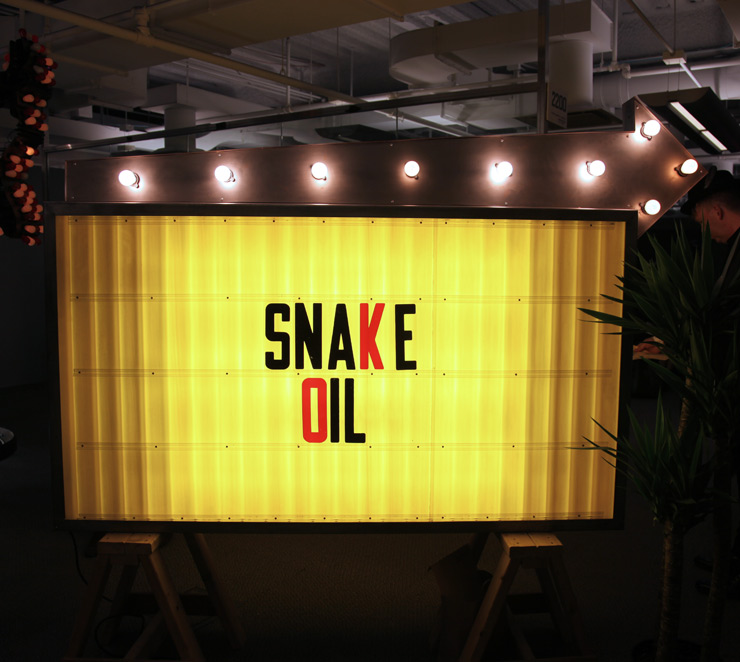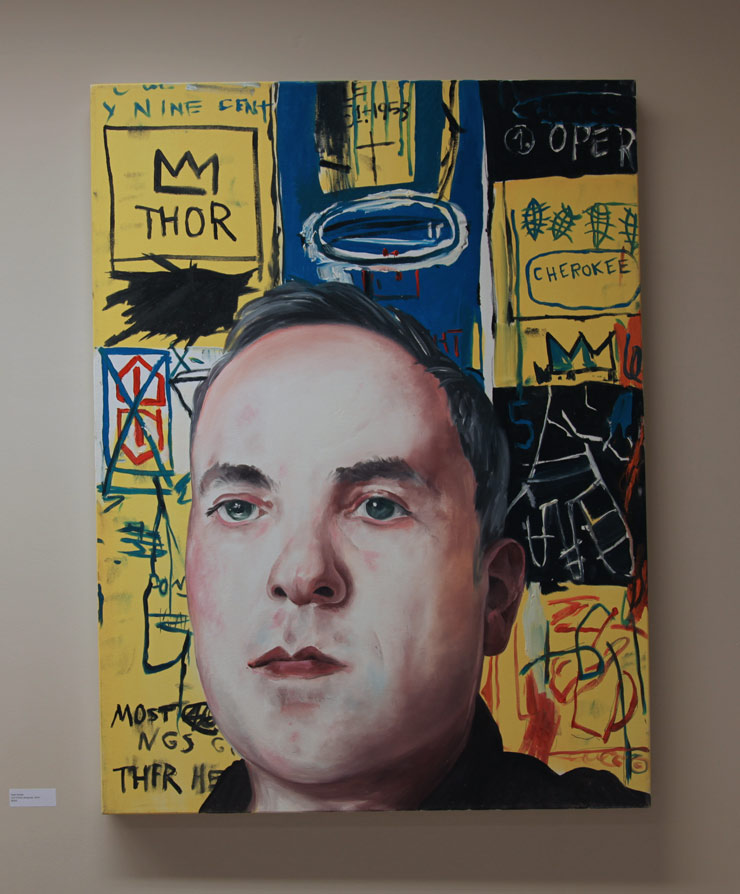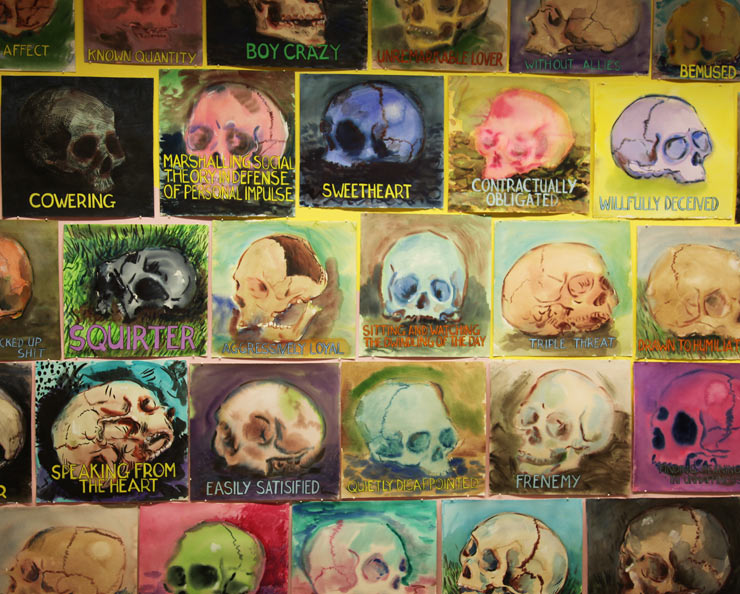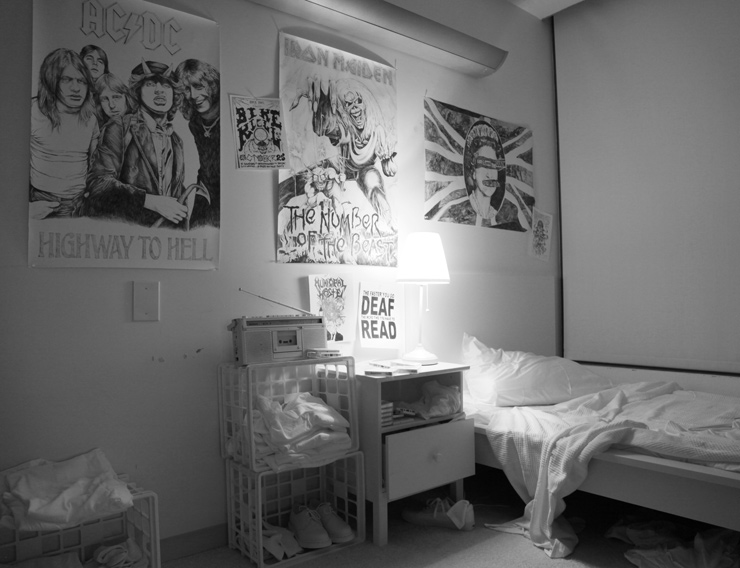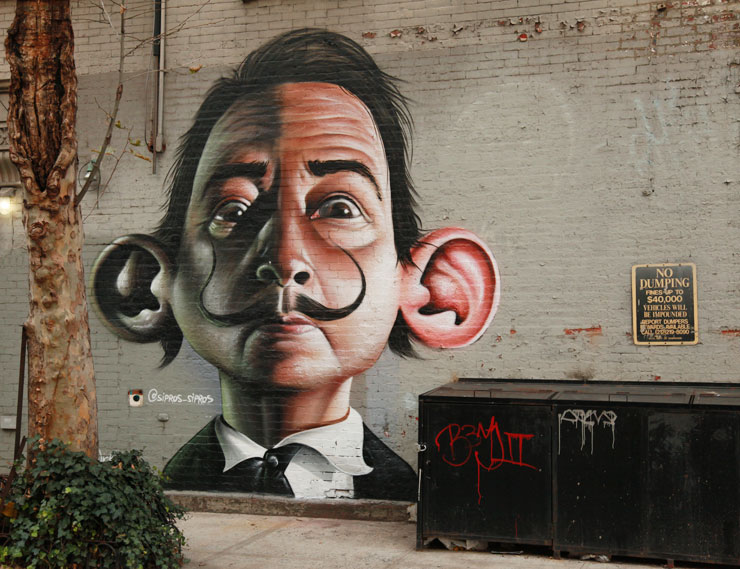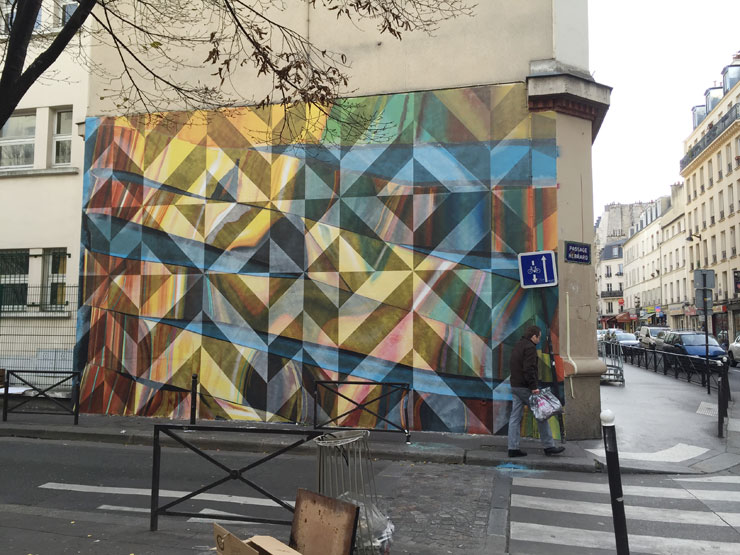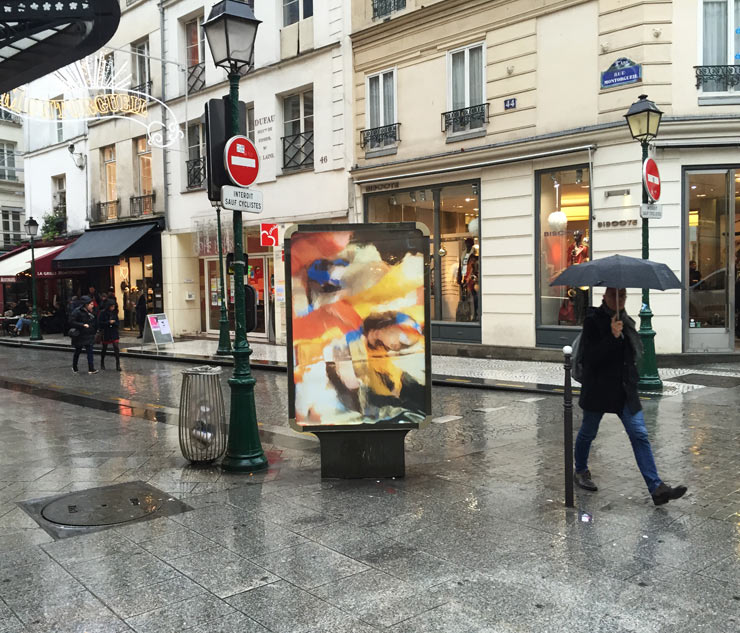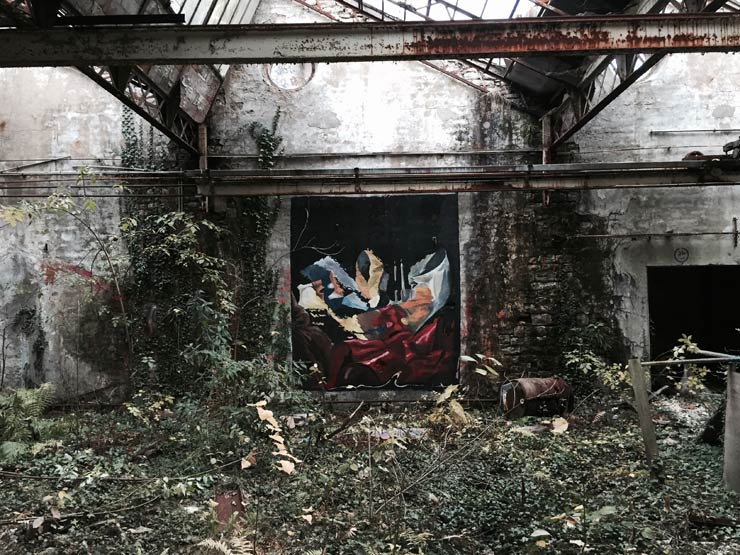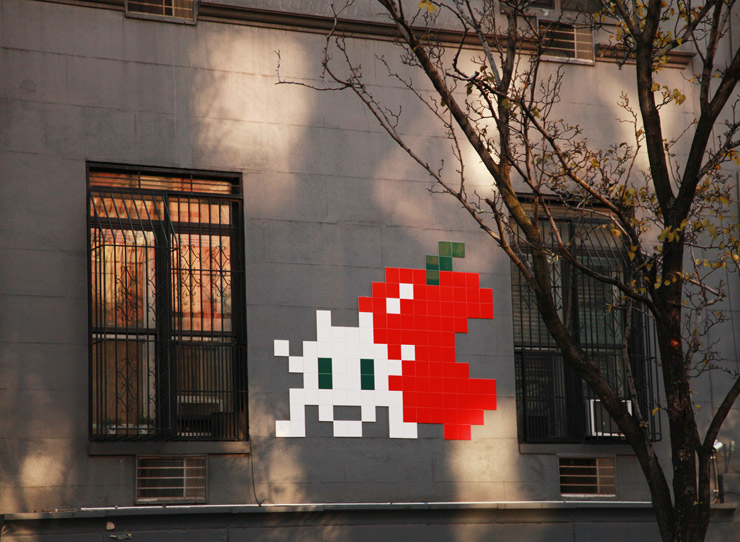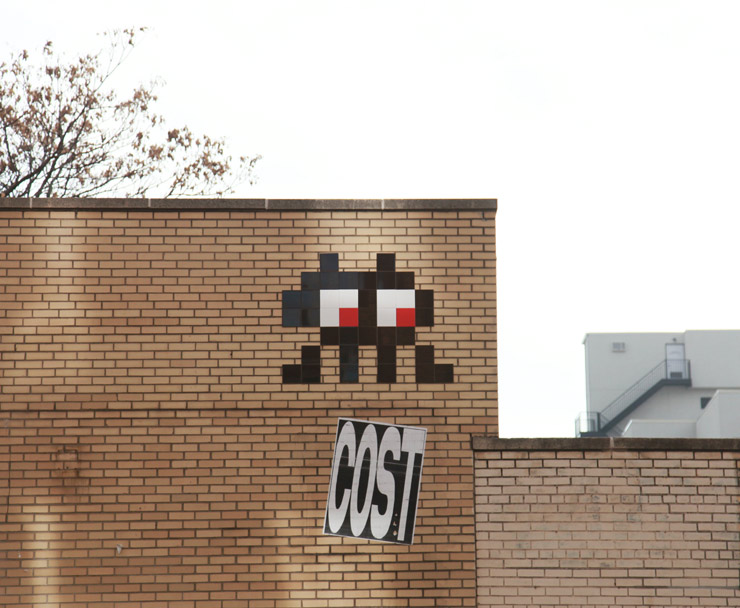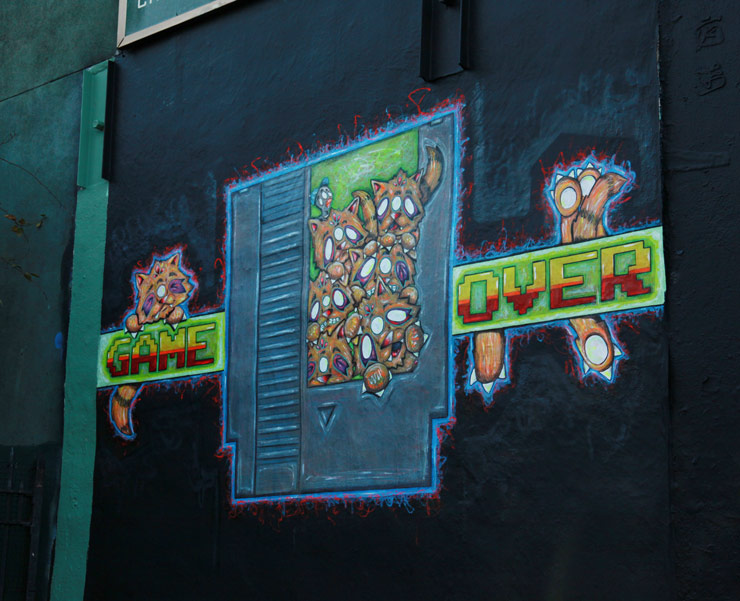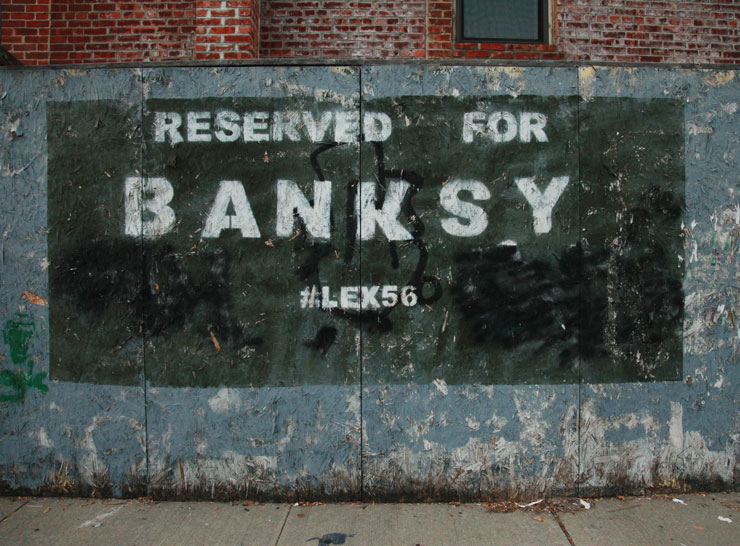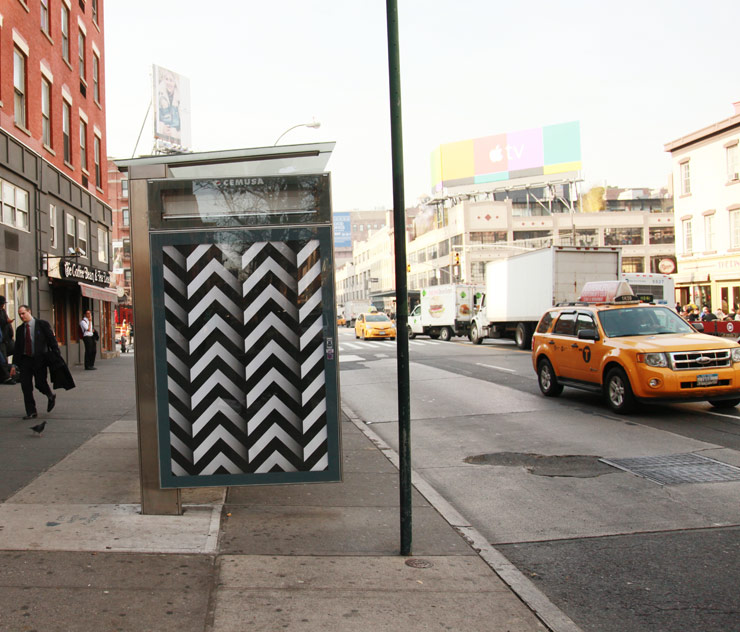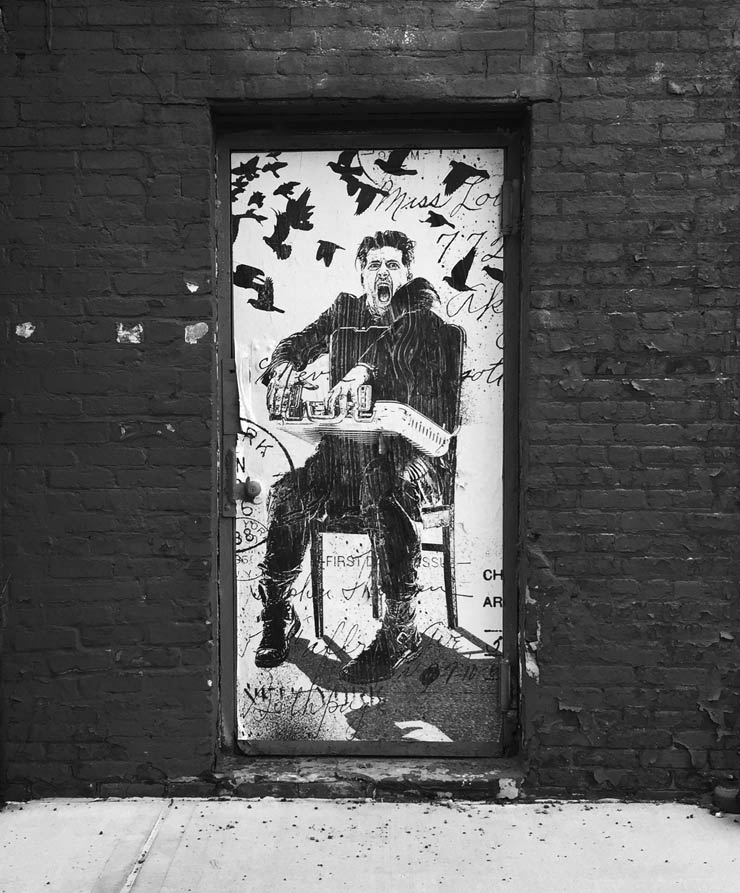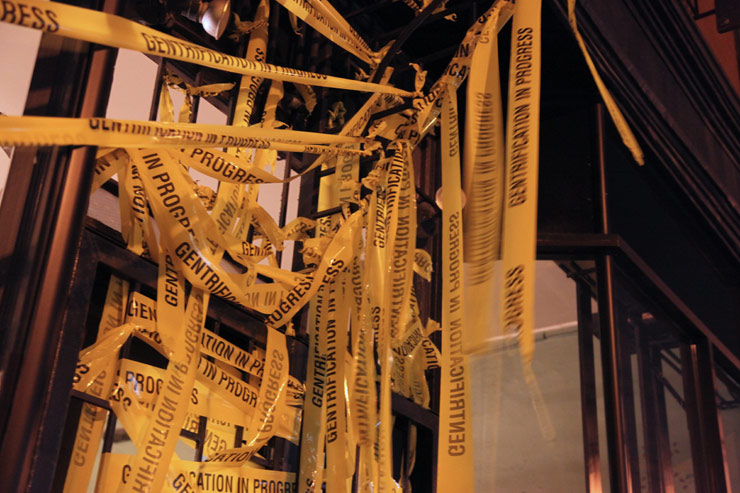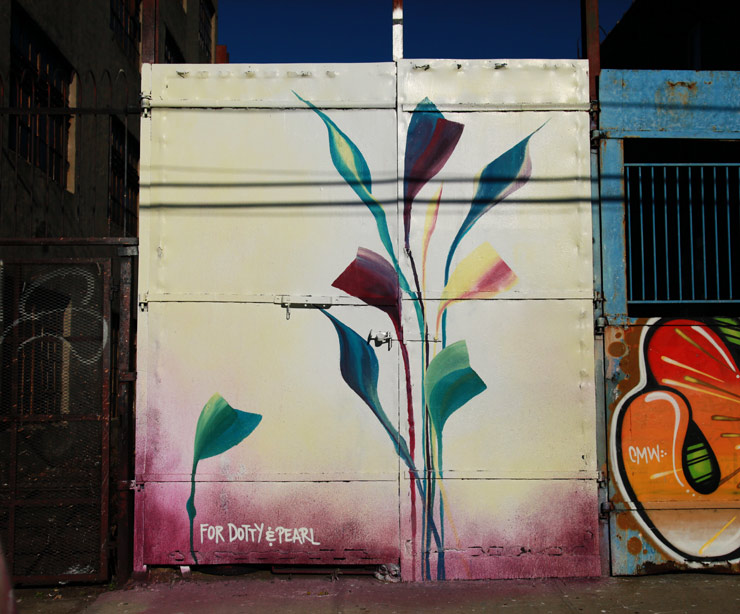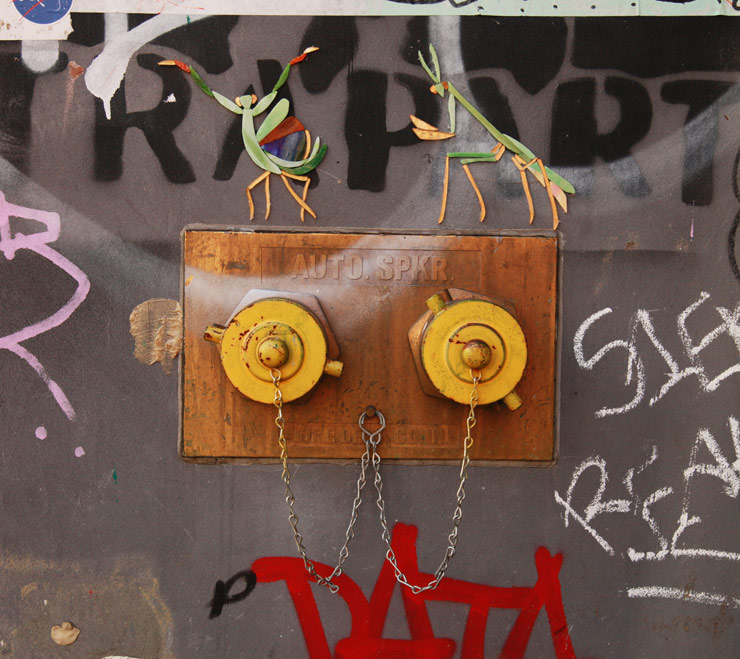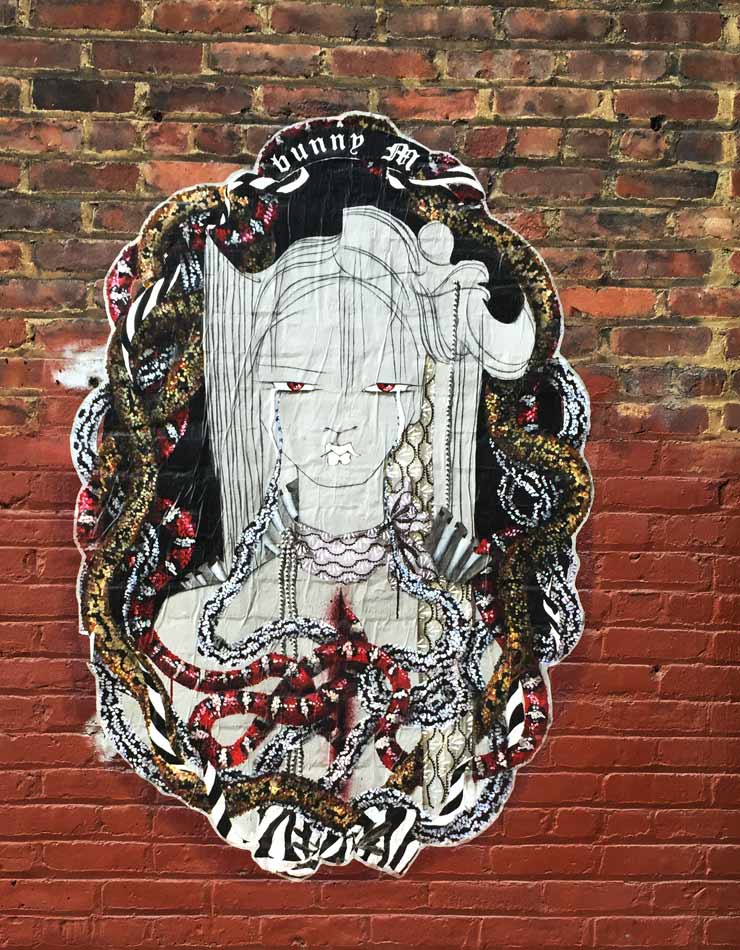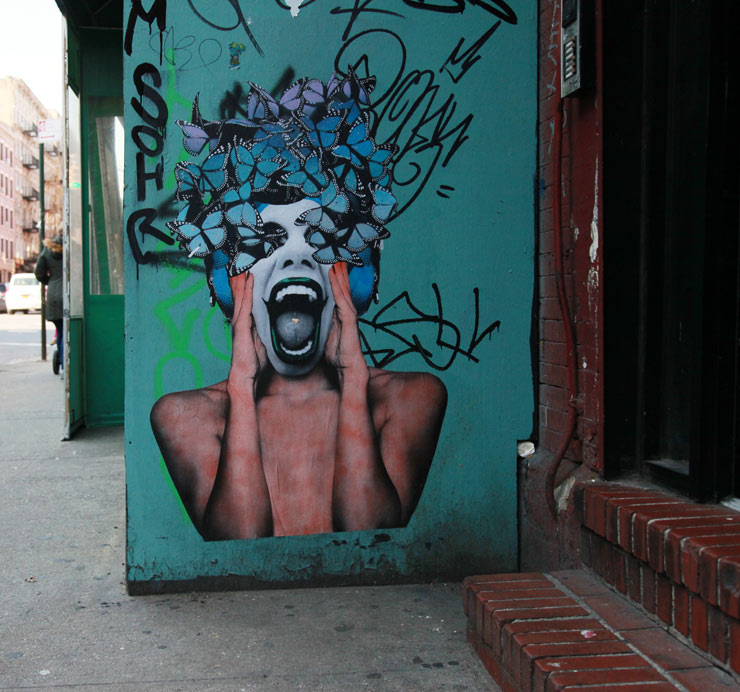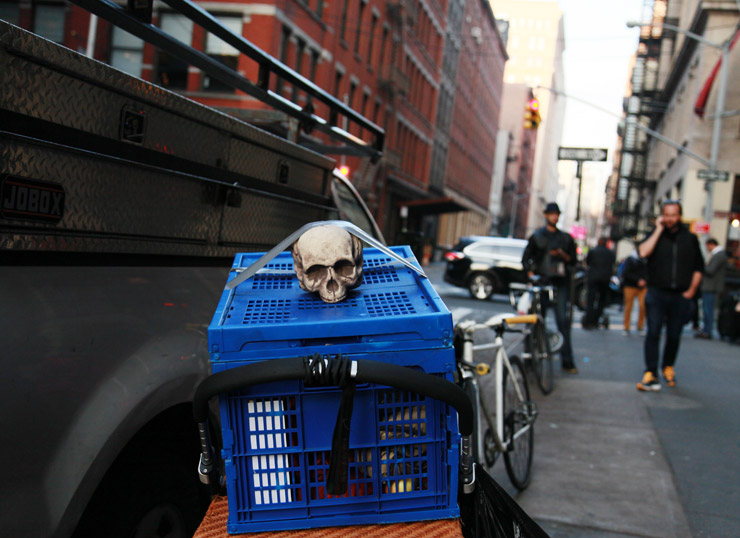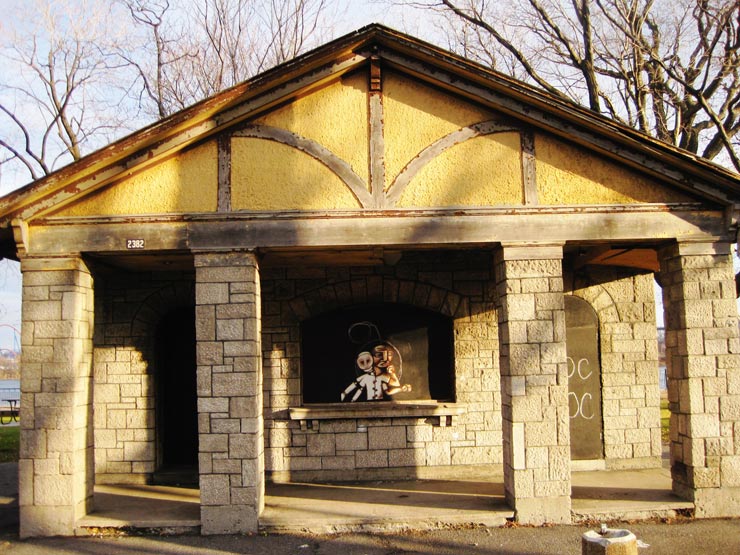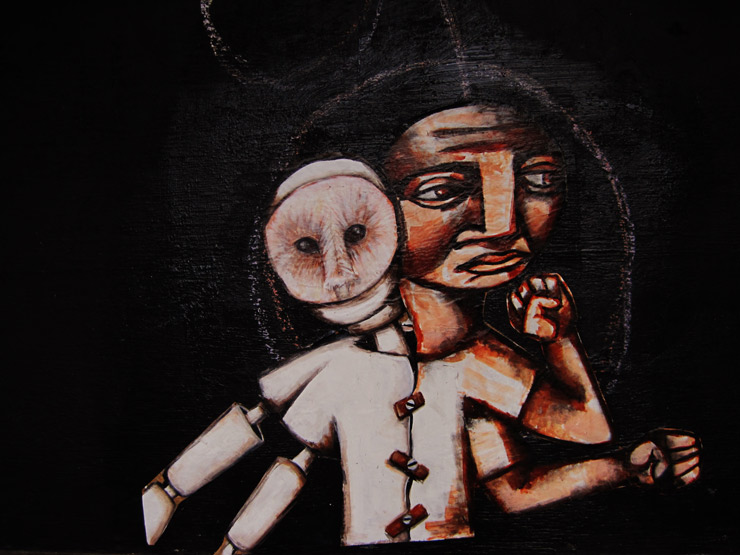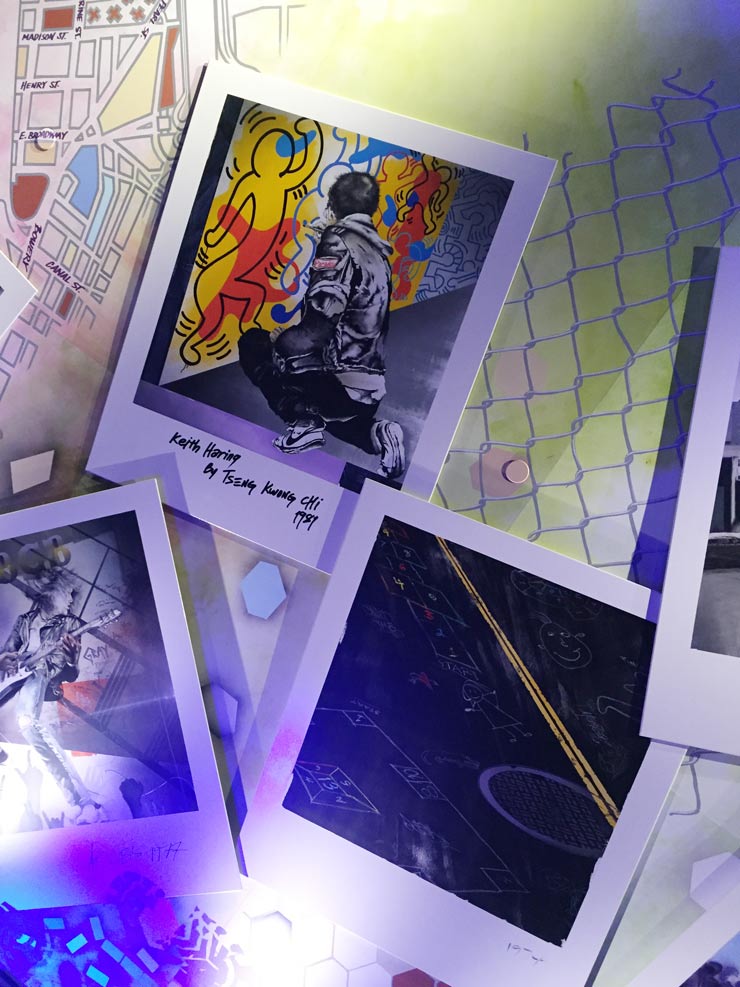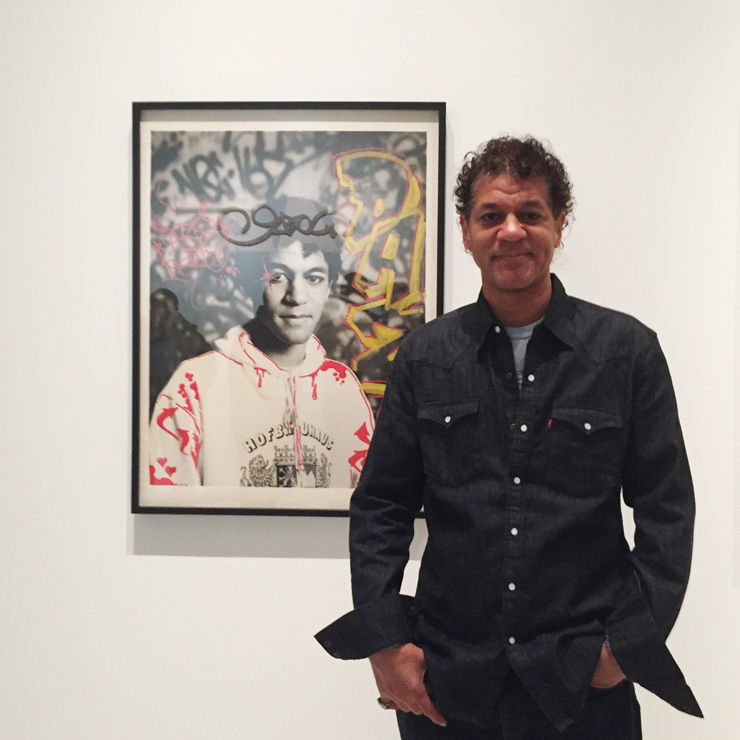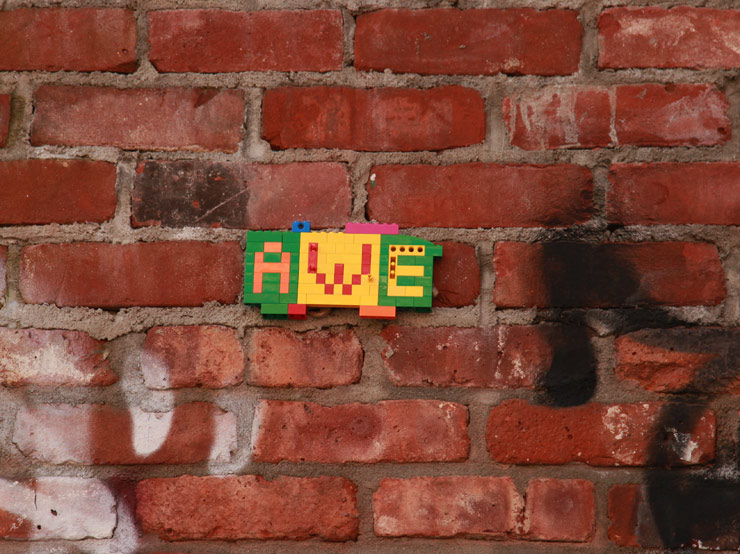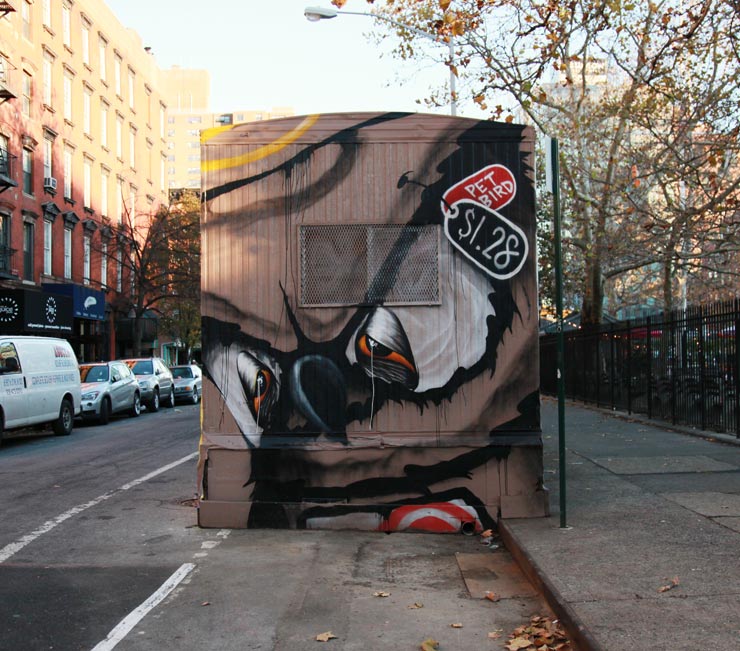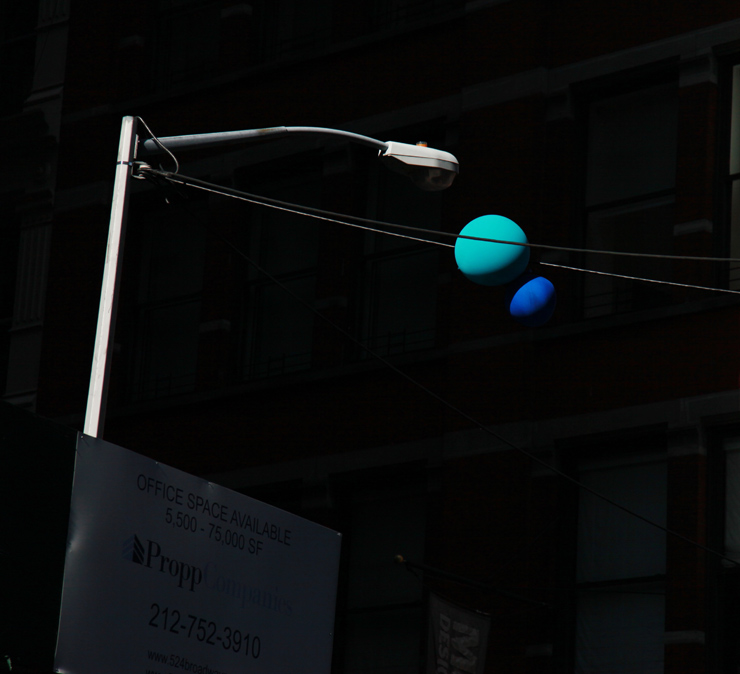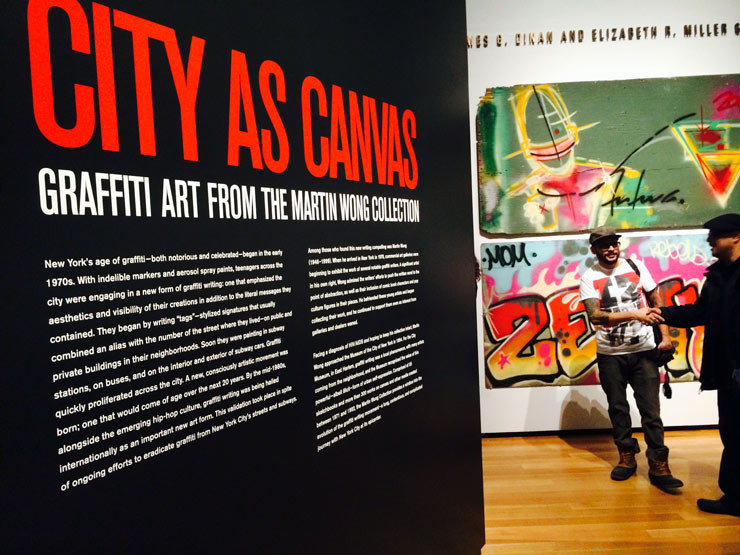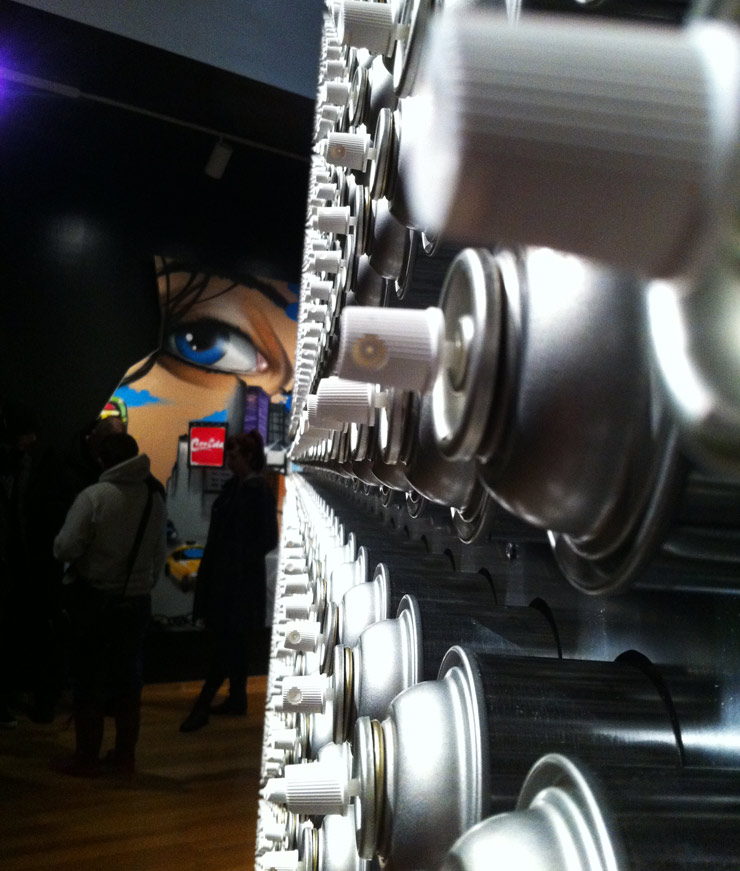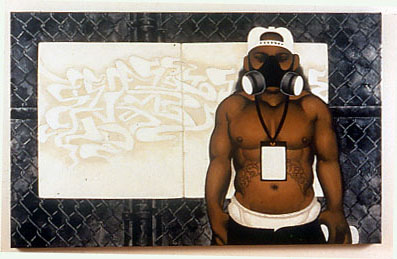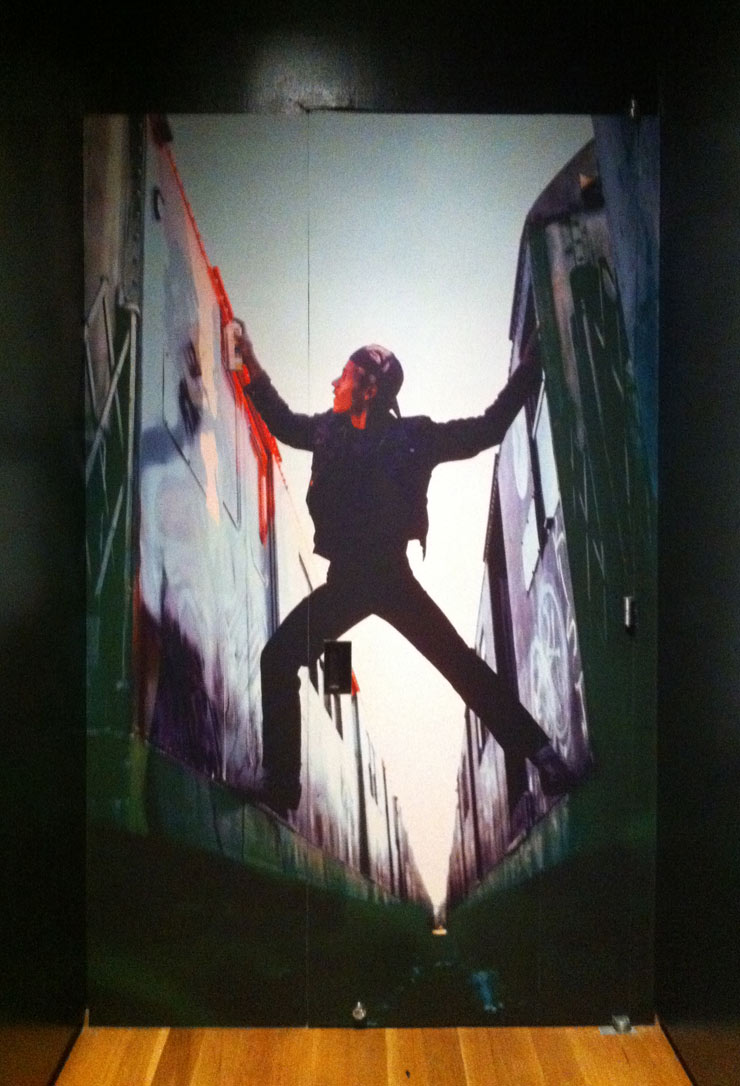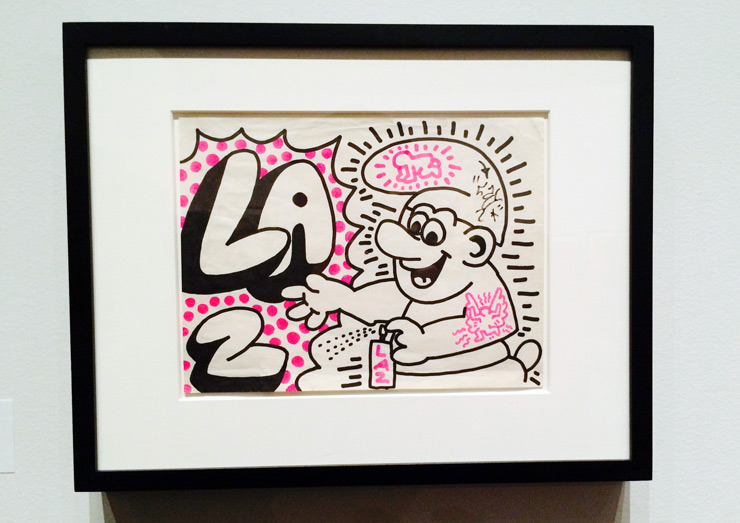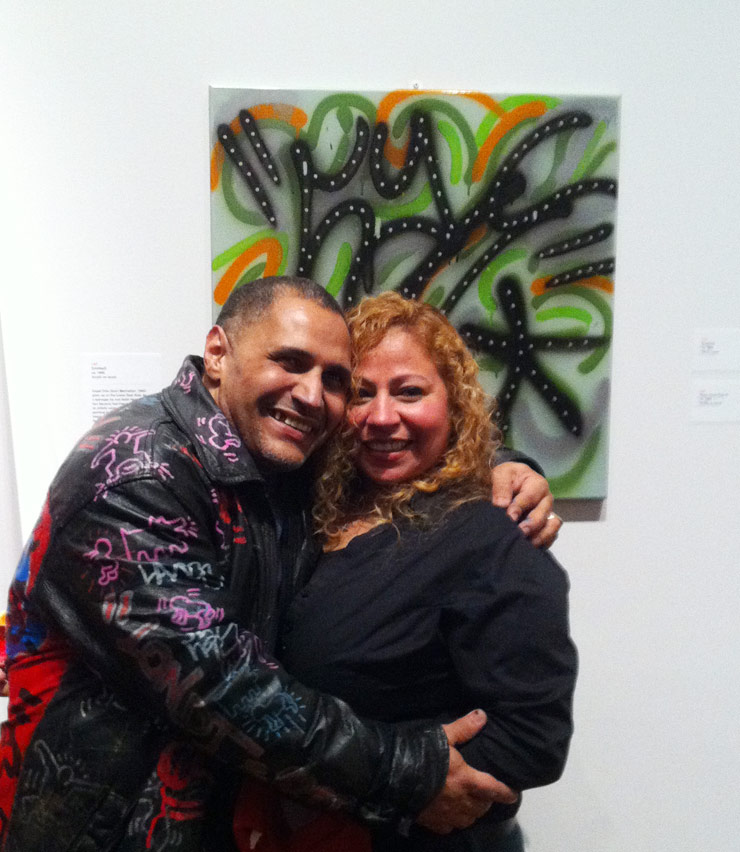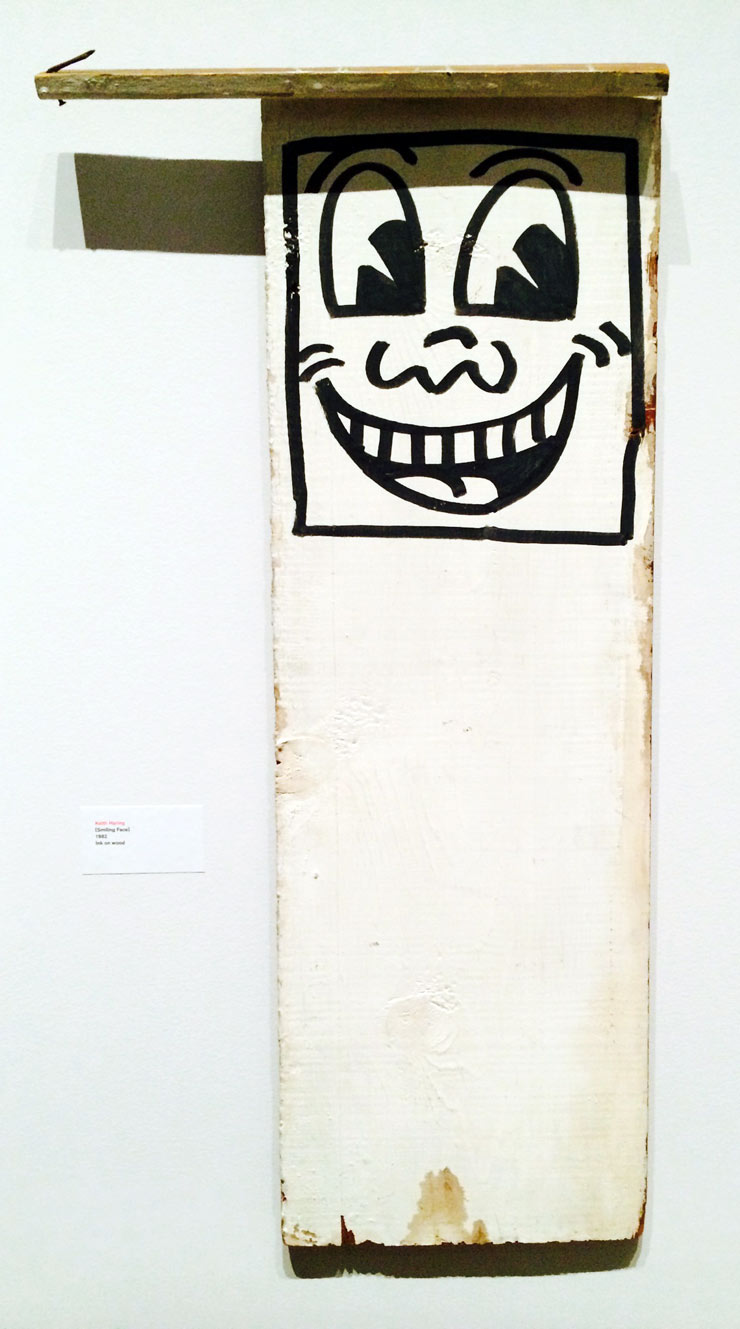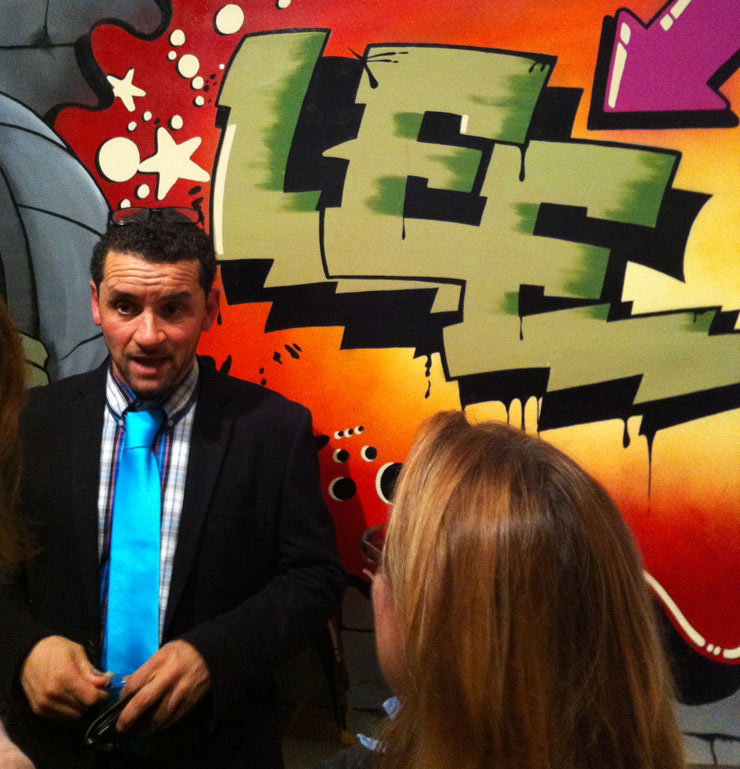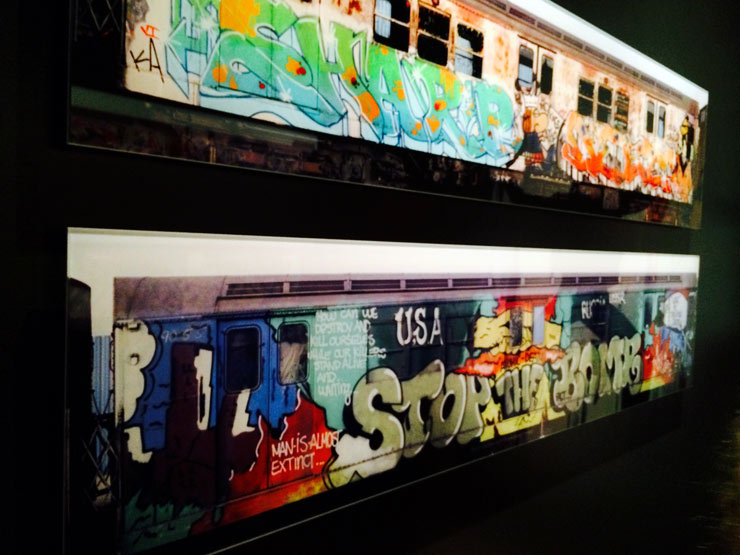It’s called ALL BIG LETTERS but it could easily be called ALL BIG DREAMS because the outward techniques, the history, and the tools of the trade of graffiti on display at Cantor Fitzgerald Gallery all lead to more internal aspirational matters.
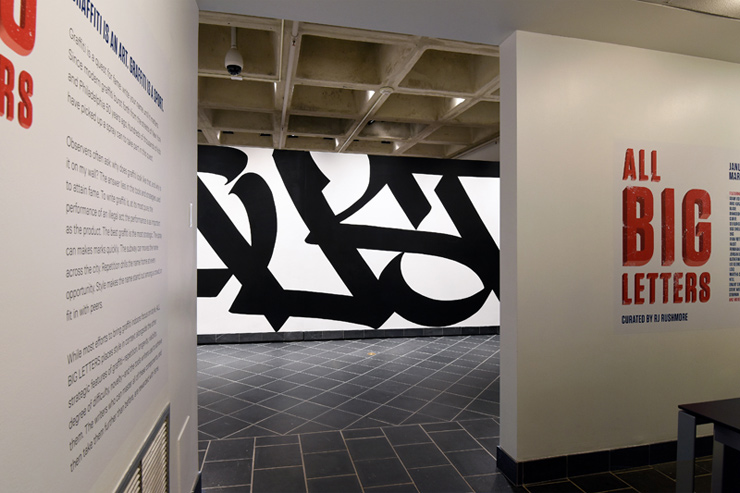
All Big Letters curated by RJ Rushmore at Haverford College’s Cantor Fitzgerald Gallery. Philadelphia, PA. (photo © Lisa Boughter)
Yes, the earliest New York and Philly graffiti writers of the 1960s took special pains and circumvented norms to get their message out, even if the message was simply their name or a street alias. But the drive to repeat it as often as possible in as many locations as possible spoke to grander dreams of recognition among peers and the addictively elusive effervescence of capturing “fame” on a public stage. Add competition, complexity, and clever innovation to the mix, and wall writers devised ever larger strategies to pursue and acquire those dreams.
RJ Rushmore, Editor-in-Chief of Vandalog, curates ALL BIG LETTERS at his alma mater Haverford College with this as one of his principal goals; helping viewers better understand the motivation behind the tag as well as the style and techniques used.
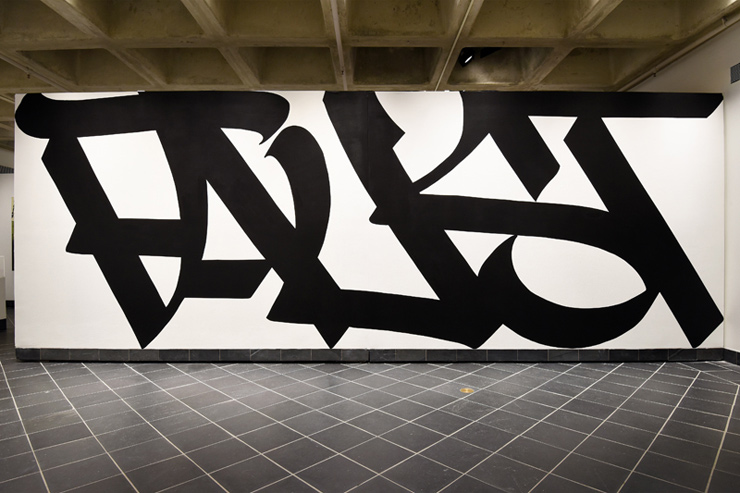
Faust. All Big Letters curated by RJ Rushmore at Haverford College’s Cantor Fitzgerald Gallery. Philadephia, PA (photo © Lisa Boughter)
“I wanted to exhibit the mind of a graffiti writer in a gallery, and make that mindset understandable to your average gallery-goer,” he tells us. “To me, that means appreciating not just the finished piece, but how and why it came to be.”
By showing artists, works, photography, and tools that judiciously span the 50 or so years that mark the era of modern mark-making in the public sphere, Rushmore threads a story line that he hopes a visitor can gain an appreciation for in this art, sport, and quest for fame.
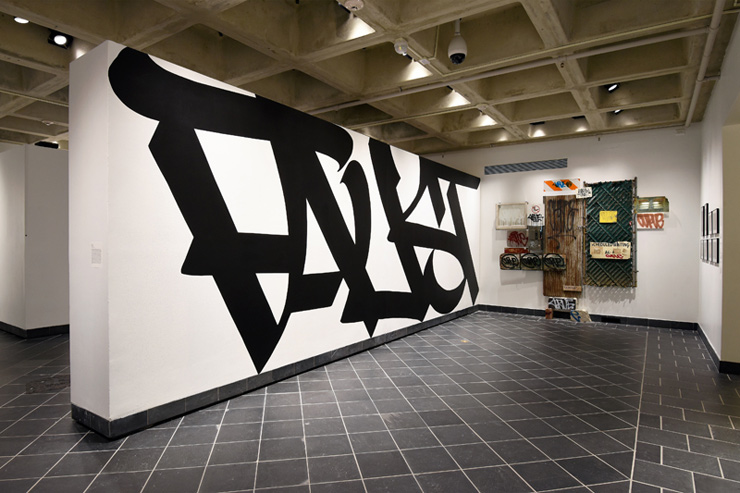
Faust . Curve. All Big Letters curated by RJ Rushmore at Haverford College’s Cantor Fitzgerald Gallery. Philadephia, PA (photo © Lisa Boughter)
We spoke with RJ about the show to help BSA readers get a better appreciation for ALL BIG LETTERS and Rushmore’s own use of technique for communication.
Brooklyn Street Art (BSA): How have you tried to demystify graffiti for a more general audience?
RJ Rushmore: In a gallery full of “graffiti on canvas,” you’ll see some beautiful art, but you won’t actually learn that much about graffiti. All you’ll see are things that resemble the end result of writing. That can be stunning, but it’s not the right approach for a gallery with an educational mission. Just seeing the finished product does not give you a sense of how it was made. That’s still a mystery.
ALL BIG LETTERS takes writers’ tools and strategies as its starting point, which gives a more holistic vision of graffiti. The exhibition covers style, but also the tools writers use and the importance of strategies like repetition and innovation, or the ways that writers respond to architecture. Someone should be able to enter the exhibition with zero knowledge of graffiti and leave with the ability to see a piece on the street and understand roughly how that got there, why it’s there, and why it looks the way it does.
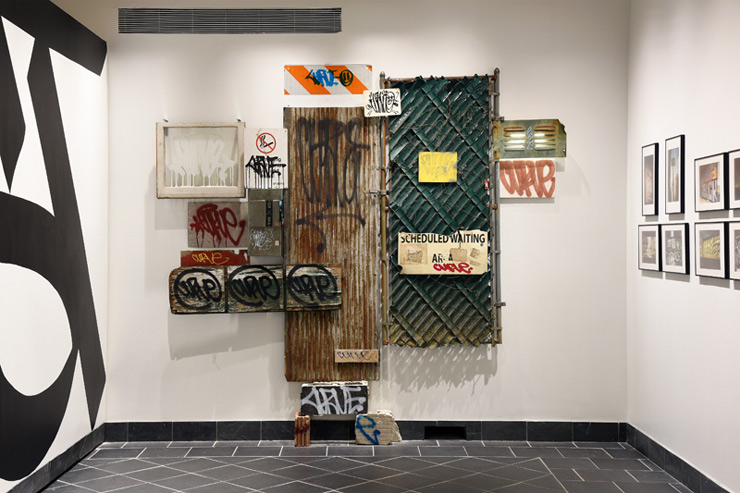
Curve. All Big Letters curated by RJ Rushmore at Haverford College’s Cantor Fitzgerald Gallery. Philadephia, PA (photo © Lisa Boughter)
BSA: What role does innovation play in the pushing of the evolution of writers’ techniques? Your text accompanying the exhibition describes the drive of competition that influenced Blade in developing his style in the 70s, for example.
RJ: Reading Blade’s book, it struck me that almost every change in his style was in response to what people were doing around him. When all it took to stand out was a simple two-color piece, that’s what he painted. When other writers were using four or five colors, he used seven. When the trains were crowded with graffiti and he was forced to paint over other writers’ partially-buffed or dissed pieces, he hid that old work with cloud backgrounds or his trademark blockbuster pieces. Blade was innovating, constantly staying one step ahead of the curve, and that’s why he stood out.
Graffiti is largely a game of one-upmanship, and innovation can happen in other ways too. The first writers to discover destructible vinyl stickers stood out because their stickers were so difficult to remove. Today, anybody can order destructible vinyl from Egg Shell Stickers. Destructible vinyl is still useful, and arguably makes stickers a more appealing medium, but it’s no longer novel. Or take COST and REVS. One of their greatest innovations was using wheatpaste and sticking their work on the backs of street signs and traffic lights. They dominated a physical space that most writers ignored.
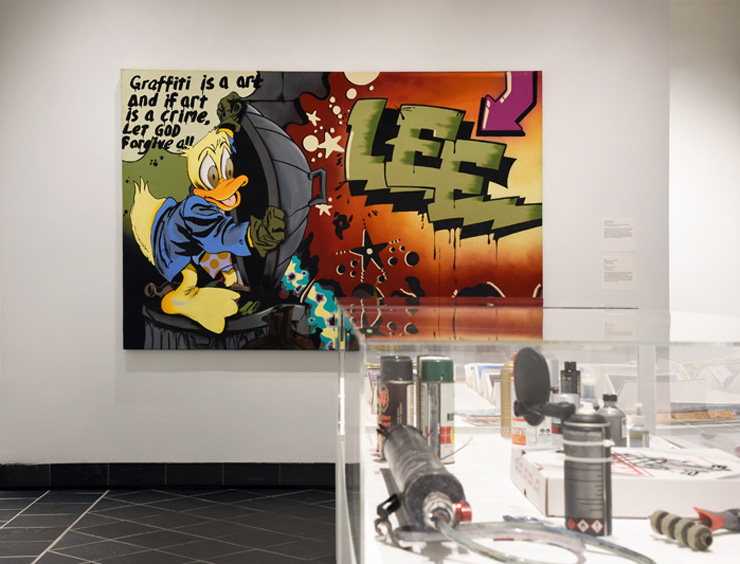
Lee Quinones. Lee George Quinones/Museum of the City of New York. Gift of Martin Wong, 1994. 94.114.1 All Big Letters curated by RJ Rushmore at Haverford College’s Cantor Fitzgerald Gallery. Philadephia, PA (photo © Lisa Boughter)
BSA: What is it like to watch the act of writing? How does “performance” enter into the equation? Katsu’s fire extinguisher tag seems like a polar opposite performance from one by Faust.
RJ: Writing is a performance, and graffiti is a kind of documentation of the performance. Writers have to climb fences, repel down buildings, and break the law in highly-visible places without being seen. I’m terrible at deciphering wildstyle graffiti or dense tags, but I love reading graffiti as a remnant of a performance, looking at a piece or a tag and trying to figure out how it happened.
KATSU and FAUST may be stylistically quite different, but whether you’re looking at a FAUST sticker or a KATSU extinguisher tag, you can appreciate that acts necessary to make them. KATSU’s extinguishers are a moment of epic lawbreaking. FAUST’s stickers are subtler. There’s the moment of putting up the sticker, but there’s also the intense focus and perfectionism that goes into making it, something that FAUST’s installation in ALL BIG LETTERS touches on. KATSU innovated mostly with tools, and FAUST innovated mostly with style. Their respective methods of getting up, their performances, reflect that.
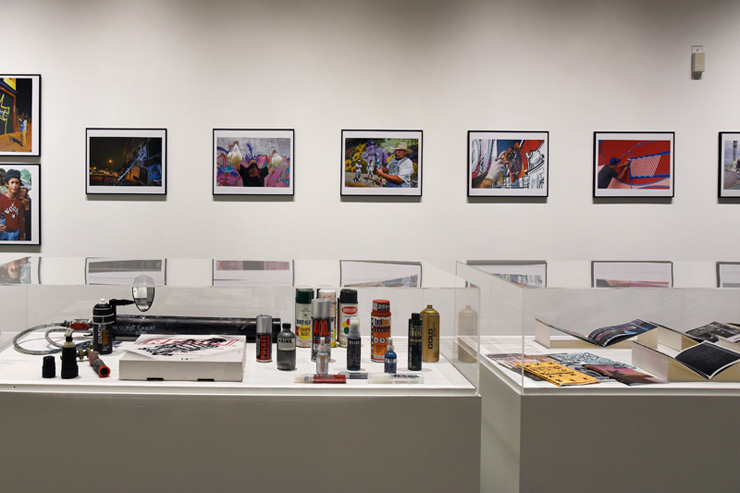
Tools of the trade under plexi: All Big Letters curated by RJ Rushmore at Haverford College’s Cantor Fitzgerald Gallery. Philadephia, PA (photo © Lisa Boughter)
BSA: When you compare graffiti writing to hacking, in this case, a city, – wouldn’t it be smart for the government to hire these hackers to better understand their city in the way that the FBI and NSA are said to hire hackers to develop spy programs and national security measures?
RJ: I suppose most cities would think to hire former graffiti writers to learn how to combat graffiti. What I would love to see, as you suggest, is a city planner hiring graffiti writers to learn how to make cities more fun.
The people who have figured this out are advertising executives. Ever wonder why so many graffiti writers go into marketing and graphic design? It’s because that’s essentially what graffiti is. Writers were developing their own “personal brands” decades before social media made the concept mainstream. Writing is a competition for fame, which is basically what advertising and marketing is.
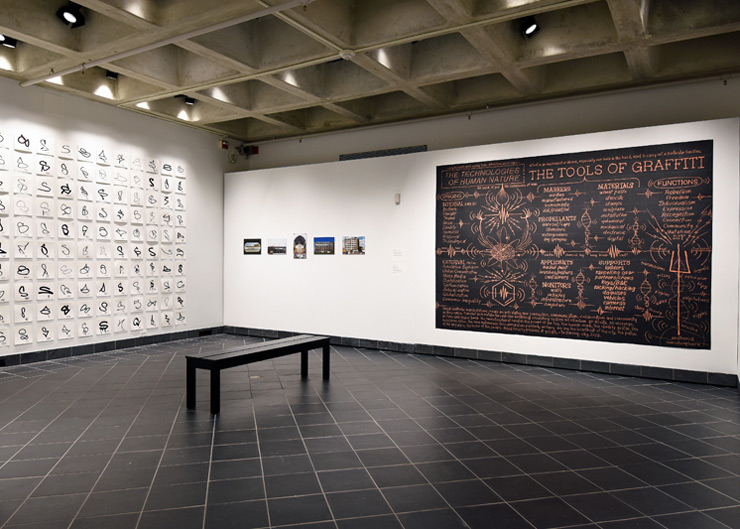
EKG on the left. All Big Letters curated by RJ Rushmore at Haverford College’s Cantor Fitzgerald Gallery. Philadephia, PA (photo © Lisa Boughter)
BSA: When you talk about hacks, are you really describing how graffiti writers have often used ingenuity and adaptation?
RJ: I have to give Evan Roth credit for this whole idea of graffiti as a series of hacks. It’s the idea that writers often use things for unintended purposes. They use subway cars as canvases, because the cars travel all over the city. They use easy-to-carry spray paint for vandalism, when their intended use is modest arts and crafts. They use fire extinguishers, because they can create massive tags. So yes, it’s ingenuity, but particularly ingenuity around using existing things for new and unintended purposes. Montana Gold is not a hack. KRINK is not a hack. Egg Shell Stickers are not a hack. But all of those commercial products developed from, and improved upon, hacks.
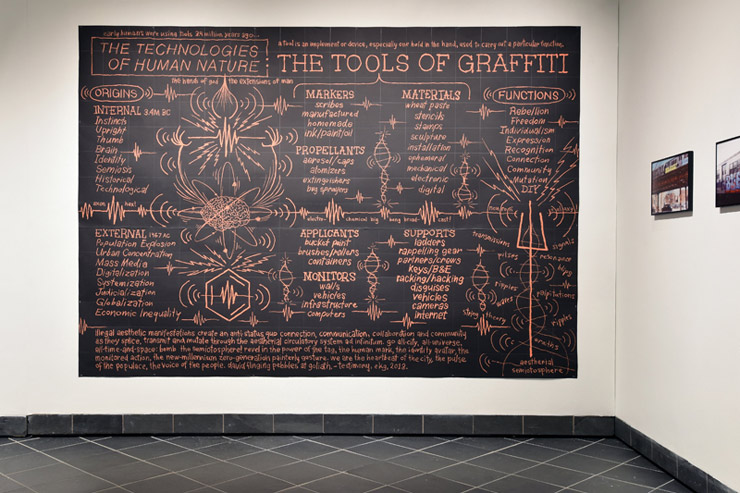
EKG. All Big Letters curated by RJ Rushmore at Haverford College’s Cantor Fitzgerald Gallery. Philadephia, PA (photo © Lisa Boughter)
BSA: What was one of your challenges in communicating a concept or idea with this exhibition?
RJ: If you’re walking in with zero knowledge, seeing a display case full of different spray cans or 140 different S’s on a wall might require some context to make sense of it all. We solved with wall text, and there’s a lot of wall text. So that’s a big ask that we make of visitors: look at the work, but also read the text we’ve put next to it.
CURVE’s piece is a great example of that challenge and how we solved it. Without context, it’s beautiful and engaging as artwork. If you come in with pre-existing knowledge of graffiti, you can probably guess at what he’s trying to do. Without that knowledge, and without reading the wall text, you might miss that the piece is as much an artwork as a teaching device, a demonstration of all the different sorts of tools and styles that a writer might use to adapt to the surface they are writing on.
I’m not sure that lots of wall text is the perfect solution, but I think it means that ALL BIG LETTERS rewards the curious. We’re asking people to spend a few minutes in the gallery, because there is an argument being made, not just a bunch of cool stuff to Instagram.
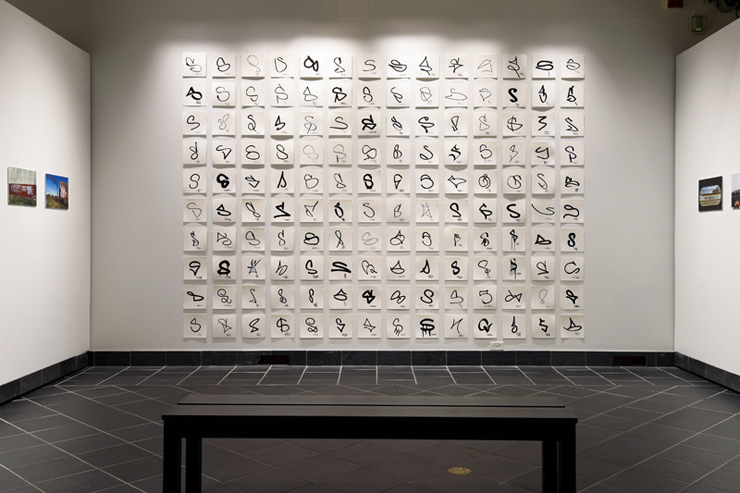
Different artists. All Big Letters curated by RJ Rushmore at Haverford College’s Cantor Fitzgerald Gallery. Philadephia, PA (photo © Lisa Boughter)
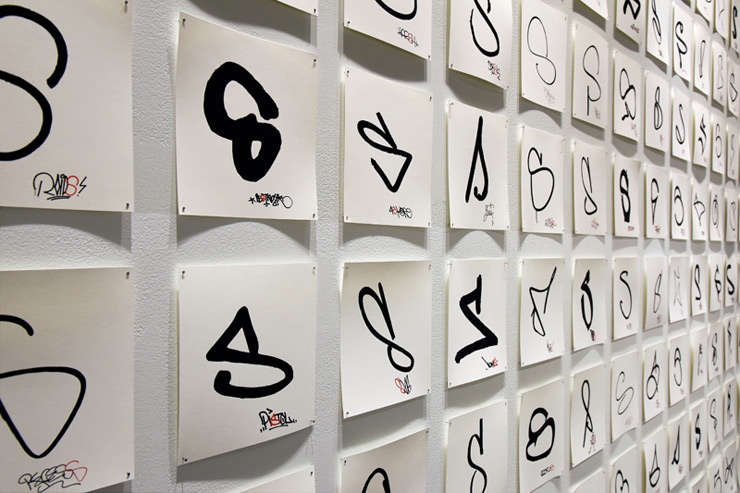
Different artists. All Big Letters curated by RJ Rushmore at Haverford College’s Cantor Fitzgerald Gallery. Philadephia, PA (photo © Lisa Boughter)
All Big Letters is currently on view at Haveford College’s Cantor Fitzgerald Gallery. Click HERE for more details.
This article is also published on The Huffington Post
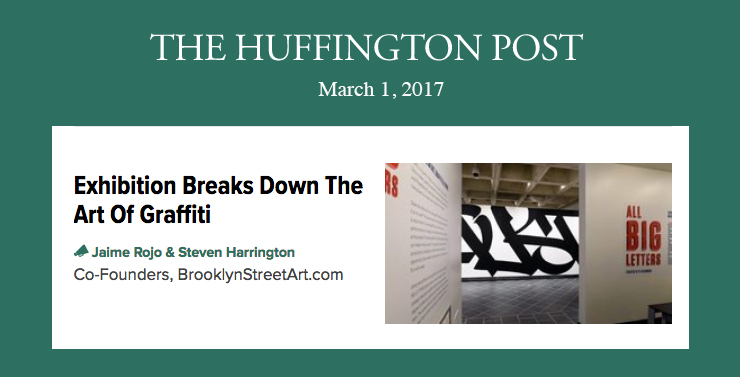
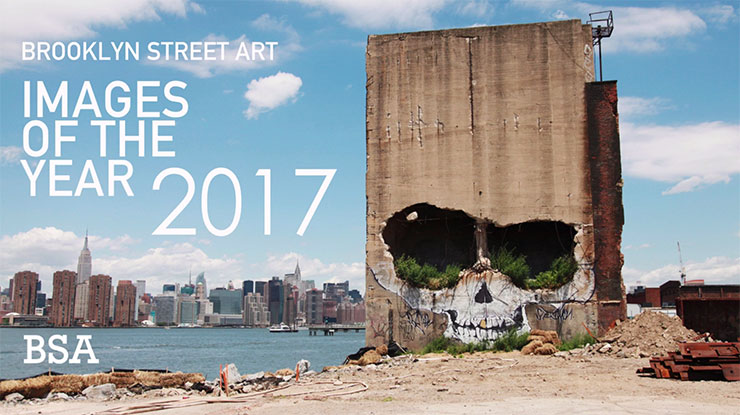
 BROOKLYN STREET ART LOVES YOU MORE EVERY DAY
BROOKLYN STREET ART LOVES YOU MORE EVERY DAY